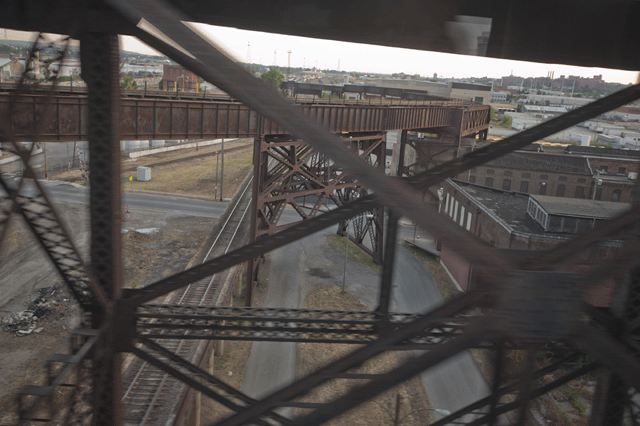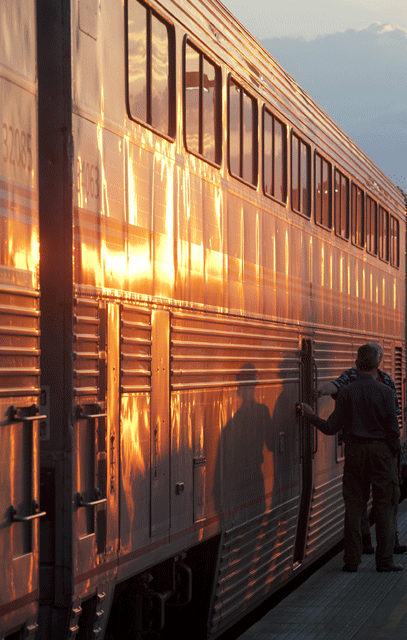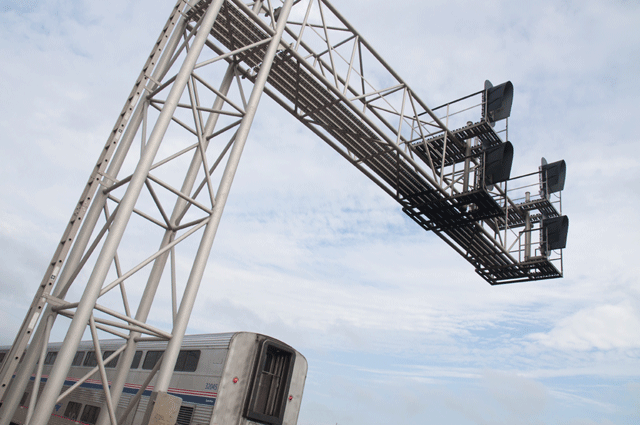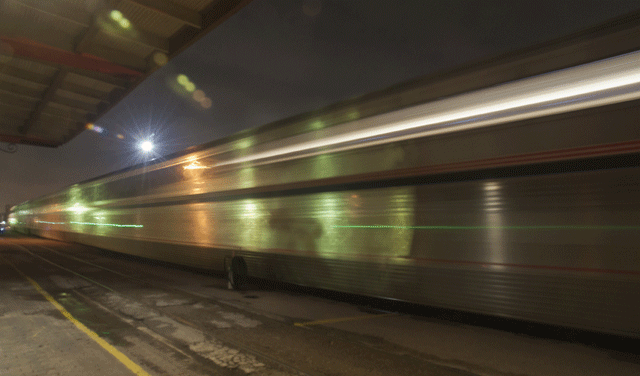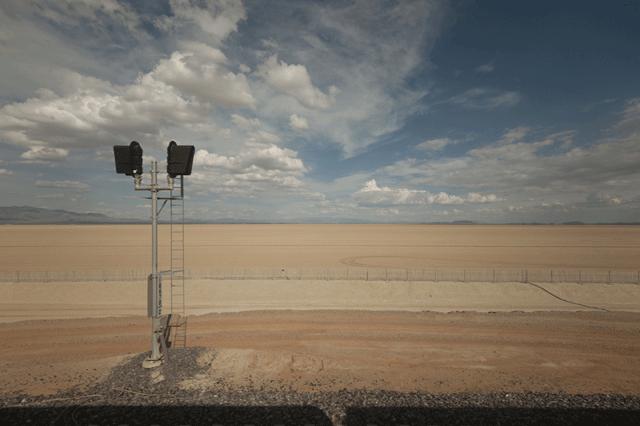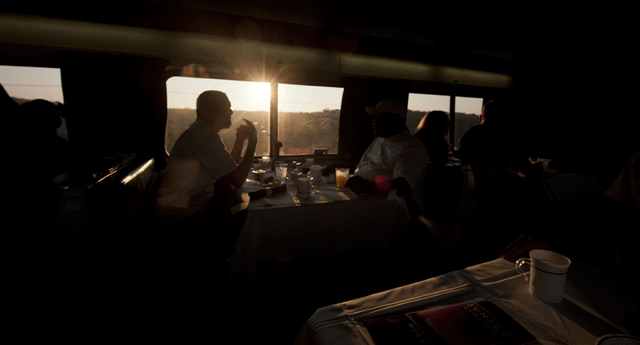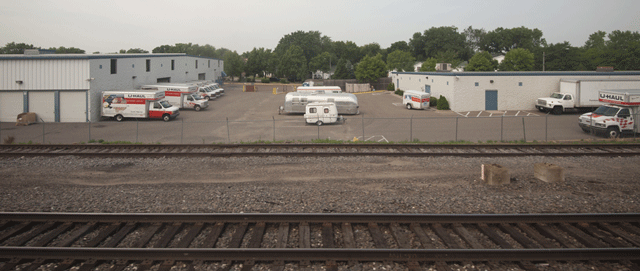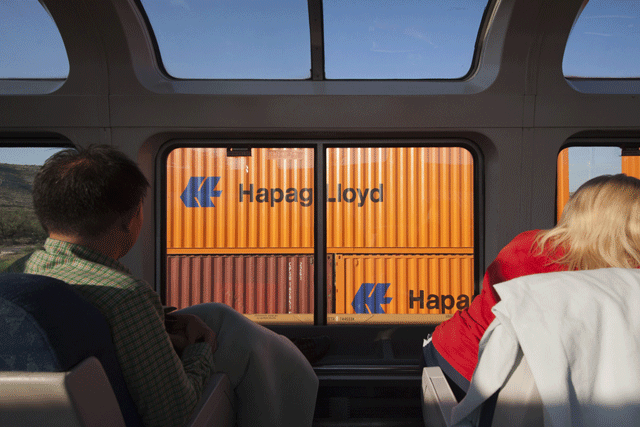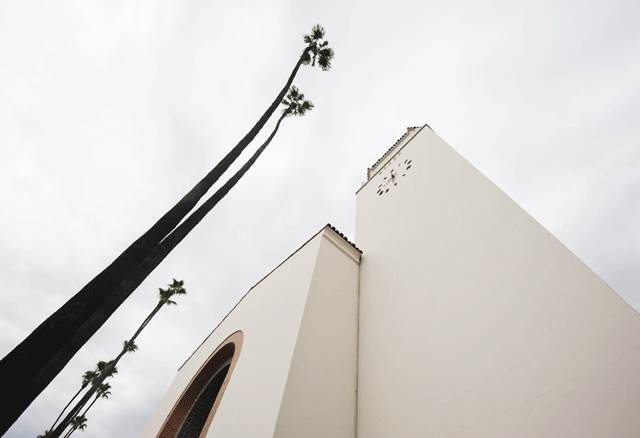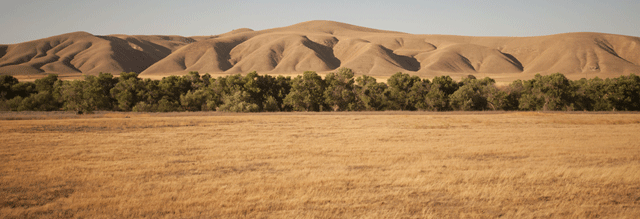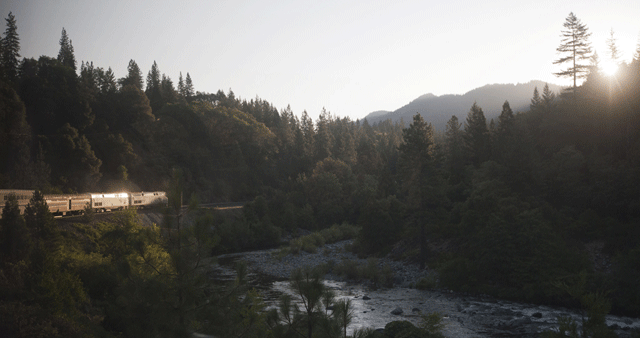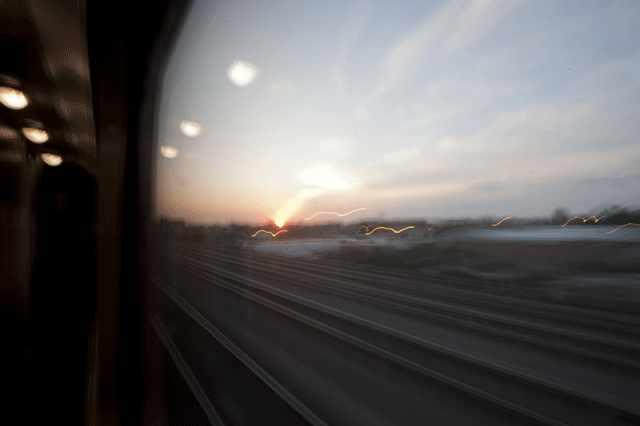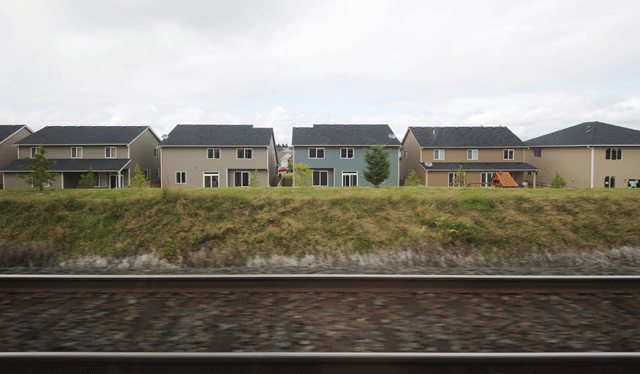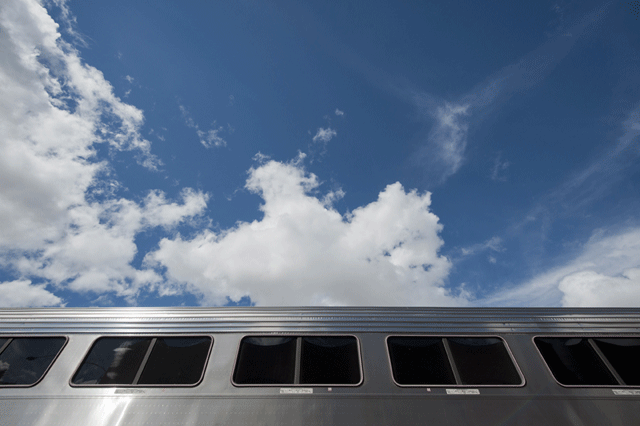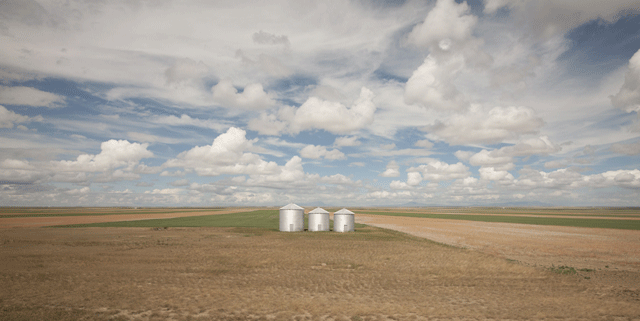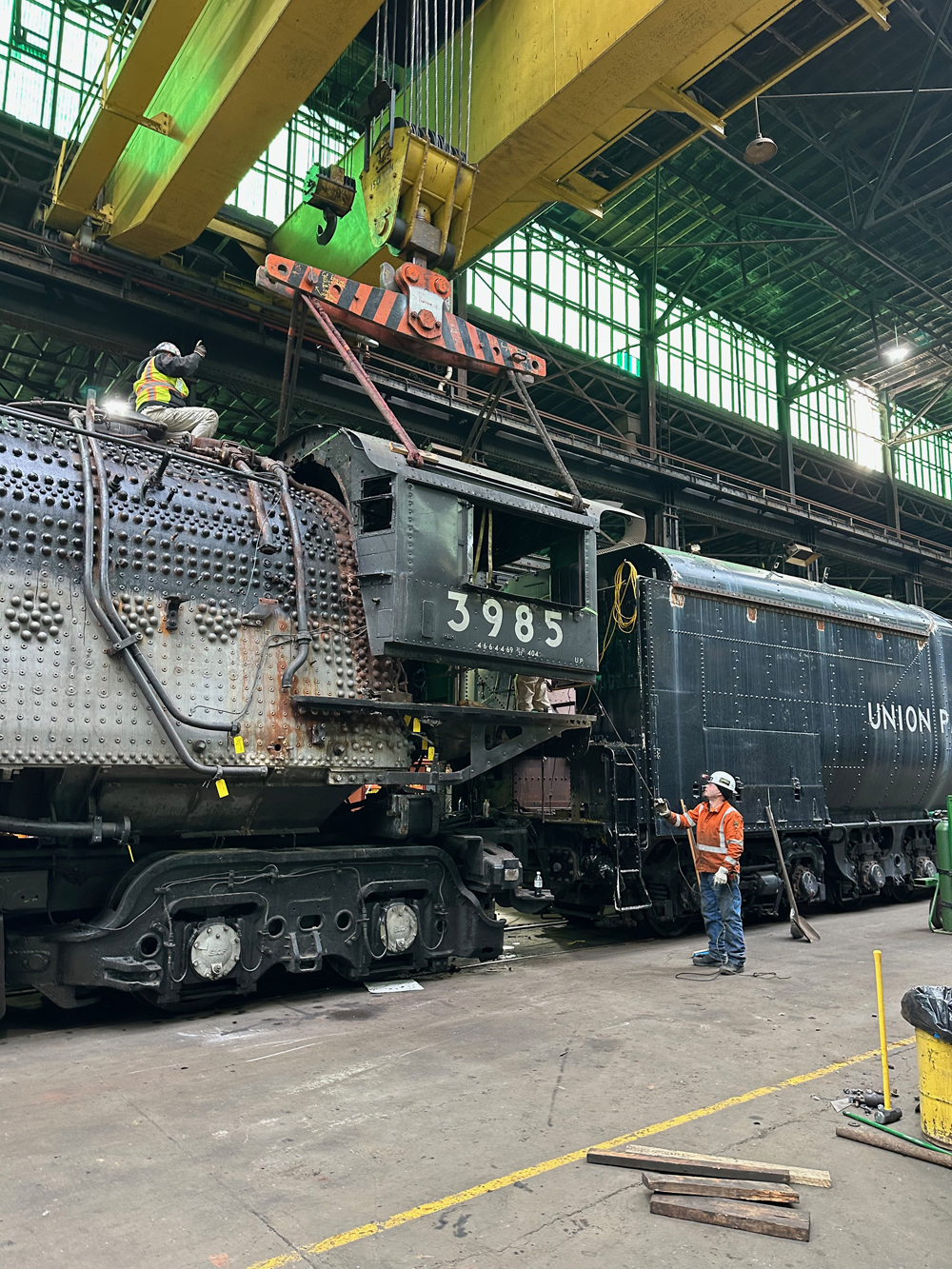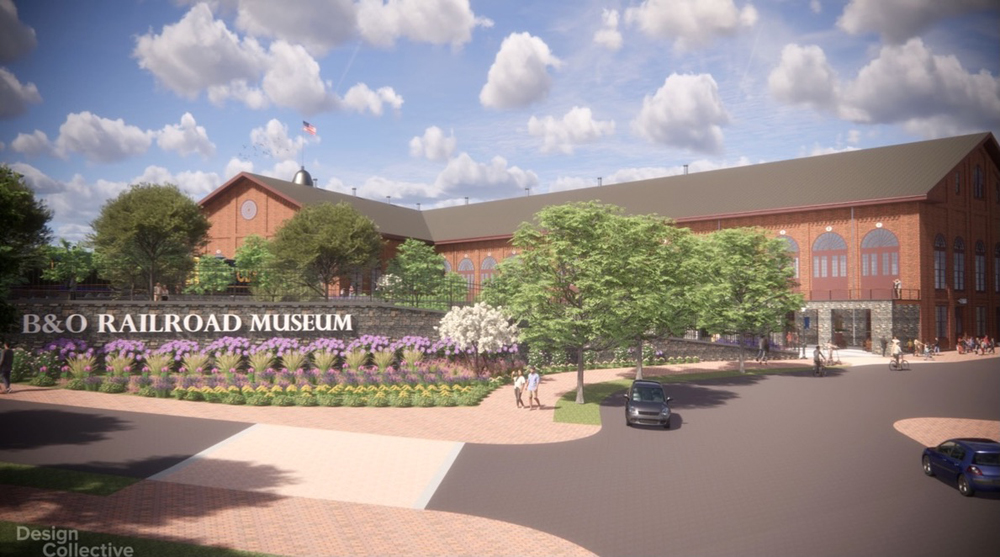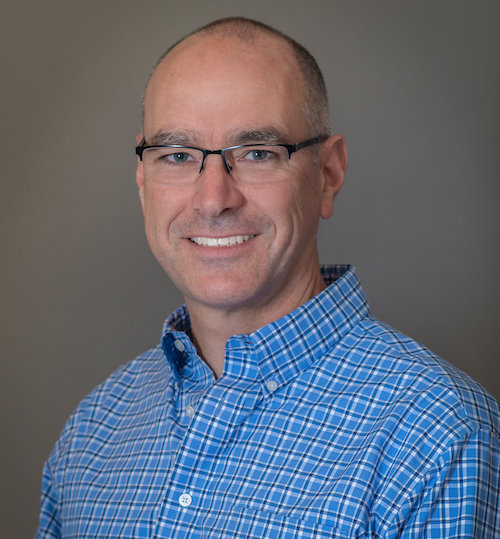Threading the maze of girders and other tracks while coming off the MacArthur Bridge into St. Louis.
In the summer of 2012, I wanted to burn up a chunk of my Amtrak Guest Rewards miles before leaving the country for a year. At the time, prior to the recent presidential election, there was no way of knowing whether certain routes, like the Texas Eagle/Sunset Limited, would still exist when I returned to the U.S. in 2014. I booked a grand loop, starting from my home in Jackson, Mich., southwest to San Antonio and Los Angeles, then north to Seattle, and finally back east to Jackson.
My original plan was to take 150 images — one during every single hour I was on a train. I knew the night photography would be challenging, but I had not anticipated the toll it would take. After the second day, I switched to Plan B, concentrating on the daylight hours. I still edited my files down to 150 images symbolizing the 150 hours of travel, but with only a loose attempt to follow the clock.
As far as the critical decision of what to photograph, I found myself pulled in two directions. On one hand, I photograph trains, so the focus became images of trains, whether through the window or from the platform. On the other hand, I am a student of cultural landscape photography — material that has nothing to do with trains. With these two competing interests dueling for my eyes, the resulting project is a bit eclectic by industry standards, but it demonstrates the variety that photographers can approach within the framework of a rail journey.
Two examples of this dueling vision are the Coast Starlight headed upriver toward Dunsmuir, Calif., (Image 11) and the grain storage bins near Dunkirk, Mont. (Image 15). The first is a result of noticing the sun starting to slice through the trees as the hills on the opposite side of the river fluctuated up and down. These random shafts occasionally matched the ever-snaking angle of the train to create a fleeting moment of brilliant reflection. This flash of silver in an otherwise dark canyon created a fascinating encounter between nature and machine. The second image is a response to the wide-open spaces of the Great Plains. In the midst of changing colors and textures, the occasional human presence is evidenced in a variety of artifacts. While grain bins now tend to be farther from the field and the source of their filling, these three testify to another season of growth and harvest at this very spot.
My photographic influences are equally varied. My first artistic awareness came during high school, when I began to realize that some photographers fascinated me more than others, namely Richard Steinheimer and David Plowden, and eventually Joel Jensen. About 15 years ago, I discovered the New Topographics. Soon after, the work of Frank Gohlke, Robert Adams, and more recently Jeff Brouws led my own photographic efforts in new directions.
One of my goals for the trip was to create an exhibition. For the venue, I wanted a public place where I could display a sizable number of images, and the local Amtrak station in Jackson came to mind. While the depot is not normally home to art displays, it hosts a Christmas installation in the waiting area every year, so I figured I had a chance. My first move was to contact Marc Magliari, Amtrak’s media relations manager, to inquire whether Amtrak was open to my display. He put me in touch with Dave Kuhn, the district manager in Toledo, Ohio. Kuhn gave me a green light, as long as I could work out the details with the local agent. A couple of visits to the Jackson depot later, we had agreed on a plan and calendar.
At about the same time, I discovered Kickstarter, which uses the crowd-sourcing model to fund creative projects. Through it, I raised $945, enough money to print the photographs and mount the exhibition.
Creating the display itself took some problem-solving to avoid damaging the building and interrupting traffic flow. I decided on two freestanding kiosks, each 8 feet by 6 feet, which provided plenty of display space. Then I mounted the pictures onto foam core, which I glued to the display panels. Even though there is an agent on duty whenever the station is open, the display still needed to be tamper-proof, which the glue mounts provided. At the end of three weeks, nothing had been damaged, and the agent reported significant numbers of people stopping to view the displays.
After the trip, many people asked if I got tired of being on the train for so long. I did not — even though it was eight consecutive days with only one night off in Portland, Ore. What did get a bit old by the end of the trip, however, was constantly taking pictures. If I ever do this again, I will plan to focus on photography for two or three days at a time, rather than one long marathon.
I’ll end with the artistic statement included in my exhibition:
I love trains.
I also love this big chunk of land we call America.
This past July, I combined the two and got an eyeful.
I don’t get much reading done while I’m on a train,
let alone screen time. My window is much more
captivating. I’m completely happy to watch the miles
of “nothing” unfold because no place is nothing.
Every horizon, field, backyard, parking lot and
industrial structure is a place with history, a story of
what has come and been and still is.
grandeur and garbage
bridges and bowling alleys
factories and forests
coastlines and car lots
suburbs and soybeans
marshlands and mountains
supermarkets and superhighways
roadways and rivers
the nurtured and the neglected
and all the places in between.
ROGER VARLAND is a member of the Center for Railroad Photography & Art and an associate professor of art at Spring Arbor (Mich.) University. His artwork has appeared in more than 25 solo and group exhibitions, including the Billy Graham Center Museum, Bethel College, Benedictine University in Illinois, Concordia University Texas in Austin, and in numerous private collections.





